
-
Find the right food for your petTake this quiz to see which food may be the best for your furry friend.Find the right food for your petTake this quiz to see which food may be the best for your furry friend.Featured products
 Small & Mini Mature Adult 7+ Dog Food
Small & Mini Mature Adult 7+ Dog FoodHill's Science Plan Small & Mini Breed Mature Adult Dog Food with Chicken is a complete pet food, specially formulated with ActivBiome+ Multi-Benefit Technology.
Tailored nutrition to support graceful ageing in small dogs. Specially made with a synergistic blend of nutrients for energy & vigor.Shop Now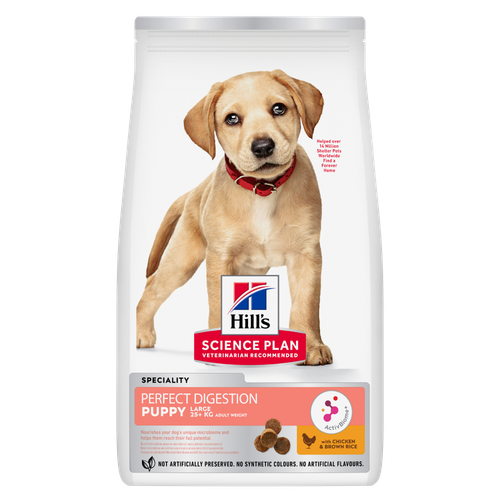 Perfect Digestion Large Breed Puppy Food
Perfect Digestion Large Breed Puppy FoodPrecisely balanced nutrition with Hill's ActivBiome+ prebiotic blend actively contributes to supporting digestive health and overall well-being to help your pet feel their best
Shop Now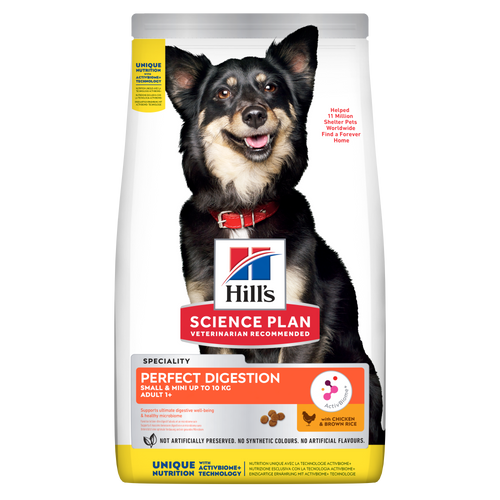 Perfect Digestion Small & Mini Adult Dog Food
Perfect Digestion Small & Mini Adult Dog FoodHill's Science Plan Perfect Digestion Small & Mini Breed Adult Dog Food with Chicken & Brown Rice supports ultimate digestive well-being & a healthy microbiome.
Shop NowFeatured products Kitten Food
Kitten FoodTender chicken chunks in gravy for kittens, with omega-3s for healthy eye & brain development and high-quality protein to support muscle growth. With balanced minerals to promote strong bones & teeth.
Shop Now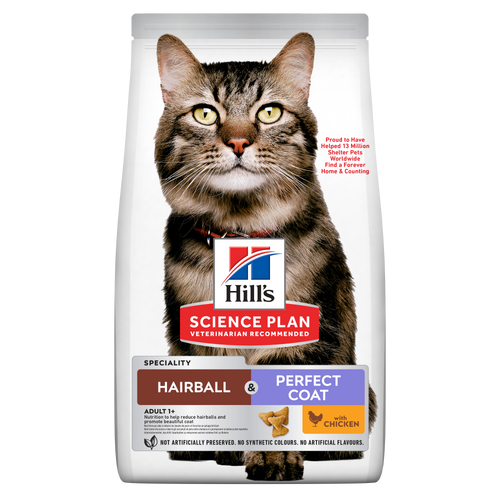 Hairball & Perfect Coat Adult Cat Food
Hairball & Perfect Coat Adult Cat FoodHill's Science Plan HAIRBALL & PERFECT COAT Adult cat food with Chicken is specially formulated to effectively help avoid hairball formation in adult cats while promoting a beautiful coat. Thanks to its mix of essential Omega-6 fatty acids, this food benefits the cat's skin and fur keeping them healthy and shiny. Our Advanced Fibre Technology helps reduce hairballs by naturally promoting their passage through the gut. This food is formulated with high-quality protein for a perfectly balanced, great-tasting recipe.
Shop Now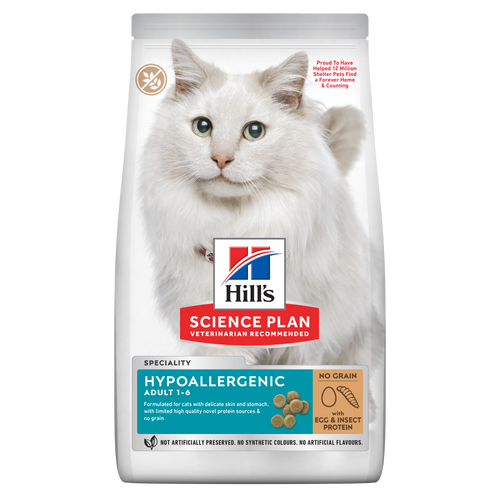 Hypoallergenic Dry Cat Food
Hypoallergenic Dry Cat FoodHILL'S SCIENCE PLAN Hypoallergenic Adult cat food with egg & insect protein is a complete pet food for adult cat 1–6 years old. It's formulated for cats with delicate skin and stomach, with limited high quality novel protein sources & no grain.
Shop Now -
Dog
- Dog Tips & Articles
-
Health Category
- Weight
- Food & Environmental Sensitivities
- Urinary
- Digestive
- Joint
- Kidney
-
Life Stage
- Puppy Nutrition
- Adult Nutrition
- Senior Nutrition
Cat- Cat Tips & Articles
-
Health Category
- Weight
- Skin & Food Sensitivities
- Urinary
- Digestive
- Kidney
-
Life Stage
- Kitten Nutrition
- Adult Nutrition
Featured articles Understanding Your Pet's Microbiome
Understanding Your Pet's MicrobiomeLearn what a pet's microbiome is, how it contributes to your pet's gut & overall health, and why nutrition is important in maintaining healthy microbiomes.
Read More Pet Food Storage Tips
Pet Food Storage TipsWhere you store your cat and dog food can make a big difference in the quality and freshness once it is opened. Here are some common questions and recommendations for optimal storage for all of Hill’s dry and canned cat and dog food.
Read More The Right Diet For Your Pet
The Right Diet For Your PetLearn what to look for in healthy pet food & nutrition, including ingredients, quality of the manufacturer, your pet's age, and any special needs they have
Read More -



Like great nutrition and a loving home, playtime is essential to your dog's well-being.
It provides exercise, stimulation, fun and superb interaction. Playtime is especially important if your pet spends extended periods alone. Some pets can't stand to be separated from their owners, and it shows in their unhappiness and possibly destructive behaviour.
If this is the case, provide your dog plenty of attention to help compensate for your absence.
Simple games
You'll be surprised at how the simplest game can be a fun experience for your dog. Chase is one of those games that dogs love. They have fun chasing a tennis ball, a Frisbee, a stick or a stuffed toy, especially one that squeaks. Maybe your dog likes chasing a football and pushing it back with their nose or simply wants to chase you.
The chase game also works well with water, depending on the breed and your dog's ease with water.
If a ball is used as the toy, be wary of the size. Ensure it is small enough that your dog can pick it up with their mouth, but not so small that they may swallow it. Also, limit the number of toys to a few favourites. Having too many toys often confuses dogs about what is a toy and what is not.
More playful activities
You might want to try a problem-solving game with your dog. Place a treat inside a cardboard box and let your dog work at finding it. At first, use a box that allows for easy access to the treat, and if successful, switch to a more complex box. Of course, afterwards you'll have shredded cardboard to pick up.


Tasty Tips
Dogs also enjoy hide-and-seek. Initially, make it easy. Hide a treat in another room but make it obvious. Let your dog in the room. Compliment your dog when they find the treat and give a reward. The game can be played inside or outside.
You can also play if you don't mind acting silly. Get on your hands and knees as close to your dog as possible. Bend your elbows and lower head and do your best barking impression. Your dog will tip their head and give you an awkward look. Bark again and they might bark back. Run a few steps and turn back towards your dog, get down and bark again. Repeat the process. Your dog will catch on, and it will turn into a playful activity.
Keep in mind your dog's play companion doesn't have to be you. A social dog will enjoy meeting and playing with other dogs. This includes wrestling, frolicking, running in the open spaces and exploring.
Playtime tips
- If you are leaving your puppy or dog alone for a while, walk or play with them in advance of leaving so they have a chance to expend excess energy.
- Training can be a game. You can teach a dog to come to you when called. Dogs learn tricks because its a game to them.
- Don't use personal or household objects as toys. Dogs can't recognise the difference between your old trainers and those new shoes you bought last week.
- Make an effort to commit to your dog's needs, including playtime. If you can't do it alone, ask a friend or family member to help.
Don't underestimate the power of attention and playtime. Stimulation lets your dog burn excess energy and helps calm nerves and emotions. The result will be a happy, fun-loving dog.


One of our staff authors prepared this article for you
Related products

Hill's Science Plan Small & Mini Breed Mature Adult Dog Food with Chicken is a complete pet food, specially formulated with ActivBiome+ Multi-Benefit Technology.
Tailored nutrition to support graceful ageing in small dogs. Specially made with a synergistic blend of nutrients for energy & vigor.
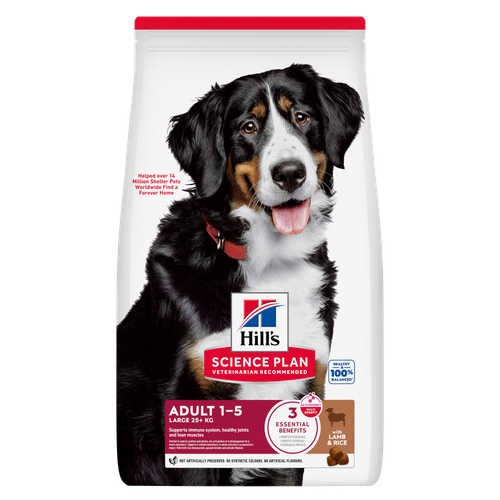
Hill's Science Plan Large Breed Adult Dog Food with Lamb & Rice is a complete pet food, specially formulated with ActivBiome+ Multi-Benefit Technology.
This food is specifically designed to fuel the energy needs of large breed dogs during the prime of their life.

Hill's Science Plan Perfect Digestion Small & Mini Breed Adult Dog Food with Chicken & Brown Rice supports ultimate digestive well-being & a healthy microbiome.

Precisely balanced nutrition with Hill's ActivBiome+ prebiotic blend actively contributes to supporting digestive health and overall well-being to help your pet feel their best
Related articles

Discover the causes, signs, and treatments of kidney disease in dogs and find methods of supporting your dog's kidney health. Learn more at Hill's Pet South Africa.

Learn about snake bites on dogs, including clinical symptoms to look for, what to do if you think your dog was bitten, and treatment & prevention options.

Discover how the field of dog science is giving us more and more insights into the inner workings of our furry best friends.

Dog obesity is a significant problem - learn more about helping your dog become trimmer and healthier through improved nutrition.

Put your dog on a diet without them knowing
Our low calorie formula helps you control your dog's weight. It's packed with high-quality protein for building lean muscles, and made with purposeful ingredients for a flavorful, nutritious meal. Clinically proven antioxidants, Vitamin C+E, help promote a healthy immune system.
Put your dog on a diet without them knowing
Our low calorie formula helps you control your dog's weight. It's packed with high-quality protein for building lean muscles, and made with purposeful ingredients for a flavorful, nutritious meal. Clinically proven antioxidants, Vitamin C+E, help promote a healthy immune system.

